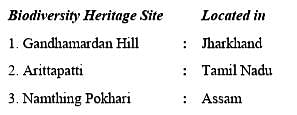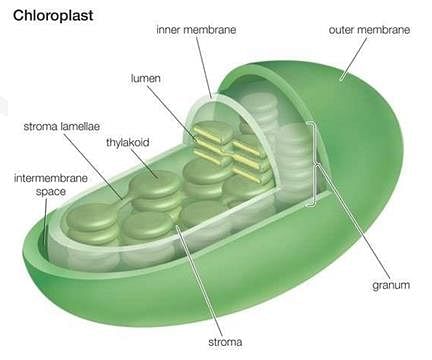UPSC CSE Complete Practice Test - 3 - UPSC MCQ
30 Questions MCQ Test - UPSC CSE Complete Practice Test - 3
Consider the following statements:
1. She started the first indigenously-run school for girls in Pune in 1848.
2. She set up Balyata Pratibandak Gruha, a childcare centre for the protection of pregnant widows and rape victims.
3. Bavan Kashi Subodh Ratnakar ("The Ocean of Pure Gems") was one of her famous literary works.
The above statements describes which of the following personalities?
Consider the following statements:
1. Chloroplasts are green-colored plastids, which comprise pigments called chlorophyll.
2. Chloroplasts are found in all green plants and algae.
Which of the statements given above is/are correct?
| 1 Crore+ students have signed up on EduRev. Have you? Download the App |
Consider the following statements with reference to XPoSat mission:
1. XPoSat is the world’s first satellite based mission dedicated to making X ray polarimetry measurements.
2. POLIX (Polarimeter Instrument in X rays) which is the main payload will serve as an X-ray Polarimeter.
3. It is placed in geostationary earth orbit which is approximately 36000 km above the Earth equator.
How many of the statements given above are correct?
With respect to lentils production in India, consider the following statements:
1. In India, Madhya Pradesh is the largest producer of lentils.
2. India is the largest producer of lentils in the world.
3. India is the net exporter of lentils in the world because production of surplus lentil
How many of the statements given above are correct?
Consider the following pairs :

How many of the pairs given above are correctly matched?
Consider the following:
1. Oxytocin
2. Serotonin
3. Endorphin
4. Dopamine
How many of the above are feel good hormones that promote pleasure while reducing depression in human beings?
Consider the following statements regarding radiocarbon dating:
1. Radioactive isotope commonly used in radiocarbon dating is C-14.
2. It can measure age of fossils up to 100 million years old.
Which of the statements given above is/are correct?
Consider the following statements with reference to the Fast Breeder Reactor:
Statement-I: Fast Breeder reactors can help extract up to 70 percent more energy than traditional reactors and are safer than traditional reactors.
Statement-II: The spent fuel from this reactor cannot be fed back into the reactor.
Which one of the following is correct in respect of the above statements?
Daily, as the sun dawns on your landscape, the crop management system takes charge. Soil sensors embedded in the fields transmit real-time data to the central hub. The algorithm analyzed moisture, nutrient levels, and weather forecasts. Automated irrigation systems are activated, precisely delivering water. Drones soared, mapping crop health and detecting pests. The system ensured optimal conditions, maximizing yield and minimizing environmental impact.
Which of the following technologies is best described in the passage given above?
Consider the following statements regarding Carbon Nanotubes (CNTs):
1. CNTs can be coated on cotton yarns of clothes to power wearable devices.
2. CNTs can be useful in carbon capture and storage technologies.
3. The easy uptake of CNTs in different cell types makes them significant in drug and gene delivery.
4. CNTs have no toxic effects making them the most sought in various industries.
How many statements were given above are correct?
With reference to the societal structure of the ancient India, consider the following statements:
1. ‘Kadaisiyar’ and ‘Adimai’ were the terms used for landless labourers and slaves.
2. The position of 'Bhojaka', the village headman, was passed down through generations, making it a hereditary role.
3. The 'Grihapatis' were prominent landowners who held the dual responsibilities of serving as judges and policemen.
How many of the above statements is/are incorrect?
Consider the following statements:
1. The Prashasti provides information regarding the rulers of Aryavarta, the rulers of Dakshinapatha and the lineage of the Shakas in the north-west.
2. The Prashasti portrays that the patron king as a skilled warrior and a knowledgeable poet.
The statements given above are sourced from which of the following ‘Prashastis’, belonging to the ancient Indian period?
At which of the following locations, the Major Rock Edicts of Ashoka were found?
1. Shahbazgarhi
2. Maneshra
3. Siddapura
4. Rupnath
5. Maski
How many of the above mentioned locations are correct?
Who of the following officer was in-charge of land revenue department in the Mauryan administrative system ?
With reference to the important centres of art production, consider the following statements:
1. In the Mathura School of Art, the images of ‘Ayudhas’ are associated with Vishnu and Shiva.
2. The site of ‘Devnimori’ is the earliest site in the Gangetic Valley, where sculptures from the Mathura School have been found.
3. The halo surrounding the Buddha in the Sarnath School is heavily decorated, drawing inspiration from the Mathura School.
4. ‘Red sandstone’ is the primary material used in the sculptures of the Mathura School of Art.
How many of the above statements is/are correct?
Regarding the Amaravati School of Art, consider the following statements:
1. The rulers of the Rashtrakuta dynasty were the first patron of the Amaravati School of Art.
2. The sculptural form in Amravati art is distinguished by its portrayal of dynamic movements and depiction of bodies in the ‘Tribhanga postures’.
3. The narrative art of the Amaravati School showcases influences from the Gandhara School of Art.
How many of the above statements is/are correct?
Consider the following pairs:
How many of the above pairs is/are correctly matched?
Consider the following statements about Vijayanagar:
1. The Virupaksha temple existed before the founding of the Vijayanagar Empire.
2. The Tungabhadra River divided the city of Vijayanagar into the Sacred Centre and the Urban Core.
3. The city of Vijayanagar had no mosques during the Vijayanagar Empire.
How many of the above statements is/are correct?
‘Chauchala’ and ‘Dochala’ are the styles of architecture associated with which of the following?
Consider the following statements:
1. The Lakshmana temple of Khajuraho is dedicated to Shiva.
2. The temples at Khajuraho are primarily of the Buddhist origin.
Which of the statements given above is/are correct?
Consider the following statements:
1. Ibn Battuta described Delhi as a vast city with a great population, the largest in India.
2. Ibn Battuta informs us about certain varieties of fine muslin.
Which of the statements given above is/are correct?
Consider the following documents:
1. Finance Bill
2. Outcome Budget
3. Medium Term Fiscal Policy Statement
4. Economic Survey
5. Demands for Grants
How many of the above documents comprise the Budget presented in the Parliament?
The term ‘Rules of Origin’ is sometimes seen in the news with reference to
With reference to Olive Ridley Turtles, consider the following statements:
1. They are the largest of all sea turtle species in the world and are categorized as vulnerable by the International Union for Conservation of Nature.
2. Generally, an Olive Ridley turtle lays 100-150 eggs.
3. Rushikulya Beach is a notified wildlife sanctuary for Olive Ridley Turtles in the state of Odisha.
Which of the statements given above is/are correct?
Consider the following pairs:

How many pairs given above are correctly matched?
Dakar Declaration, recently seen in the news, is related to:
Consider the following statements regarding the Consumer Price Index (CPI):
1. It measures the change in prices paid by consumers for goods and services both.
2. It is measured by the Ministry of Statistics and Programme Implementation with base year 2012.
3. The weightage of food and beverages in the CPI is close to 50%.
How many of the statements given above are correct?
Which of the following spacecraft has operated outside the heliosphere, considered to be the border of our solar system?
Which of the following are the main items of capital receipts?
1. Market borrowings
2. Profits of public enterprises
3. National Savings Certificate
4. Provident funds
Select the correct answer using the code given below.
In the context of banking reforms for strengthening the financing system in rural India, the year 1982 is important because


















